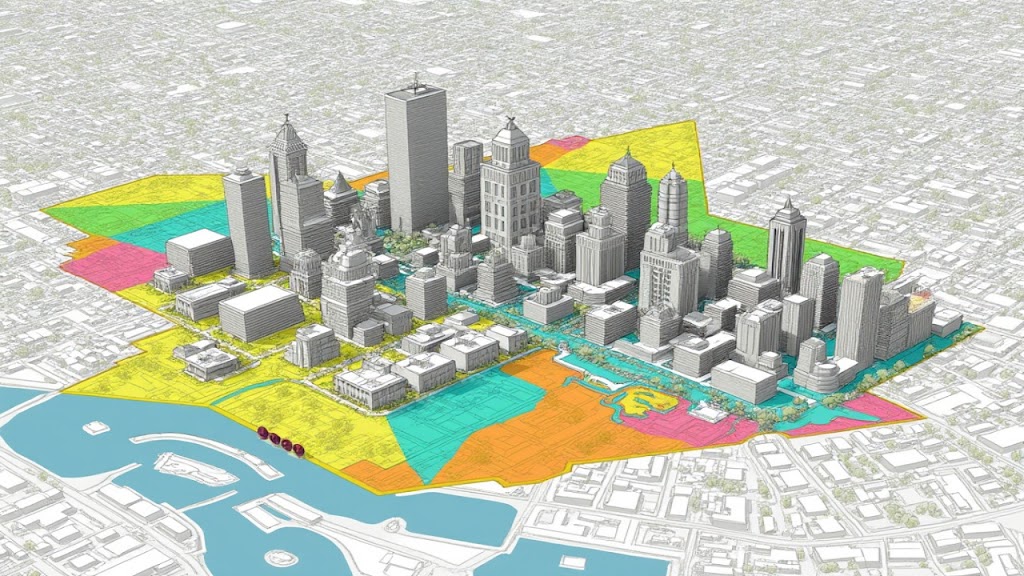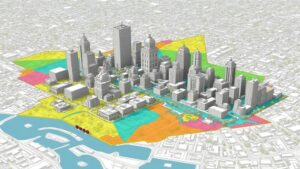Understanding zoning rules is crucial for anyone involved in property development, whether you’re buying a new home, planning renovations, or investing in commercial real estate. Zoning regulations dictate how land can be used and help shape the growth and character of communities. This article provides a comprehensive guide to understanding zoning rules, finding relevant regulations, and navigating the complexities of zoning laws.
What is Zoning?
Definition and Purpose of Zoning
Zoning is a regulatory tool used by local governments to control land use and ensure orderly development. It divides a municipality into different zones, each with its own set of rules regarding what can and cannot be built. The primary purposes of zoning include:
- Land Use Control: Ensuring that land is used in a way that is consistent with the community’s development goals.
- Community Planning: Guiding the growth of neighborhoods and commercial areas to maintain aesthetic and functional harmony.
- Environmental Protection: Preserving green spaces and managing environmental impacts.
Types of Zoning
Zoning regulations typically include several types of zoning categories:
- Residential Zoning: Covers areas designated for housing and may specify the types of residential buildings allowed, such as single-family homes or multi-family apartments.
- Commercial Zoning: Applies to areas designated for business activities, including retail stores, office spaces, and restaurants.
- Industrial Zoning: Governs areas used for manufacturing, warehouses, and other industrial activities.
- Mixed-Use Zoning: Combines residential, commercial, and sometimes industrial uses in a single area, promoting a blend of different types of development.
How to Find Zoning Regulations
Local Zoning Codes and Ordinances
To understand the zoning rules that apply to a specific property, you’ll need to access local zoning codes and ordinances. These documents are usually available on your city or county’s official website. They provide detailed information about what is permitted in each zoning district.
Navigating Zoning Codes: These codes can be lengthy and complex. Look for sections that describe zoning districts, permitted uses, and development standards. Key terms to look for include “land use,” “zoning district,” and “permitted activities.”
Zoning Maps
Zoning Maps visually represent the zoning districts within a municipality. They indicate the zoning classification of each parcel of land and can be found on local government websites or in municipal offices.
Interpreting Zoning Maps: Examine the map to see which zoning district your property falls into. Zoning maps typically use color codes or patterns to represent different types of zoning. Compare this with the zoning code to understand the specific regulations that apply.
Contacting Local Authorities
For the most accurate and current information, contact your local planning or zoning department. These offices can provide detailed explanations of zoning regulations and help with specific questions related to your property.
What to Request: Ask for information on your property’s zoning classification, permitted uses, and any special permits or variances that may be required for your intended use.
Understanding Zoning Regulations
Zoning Classifications
Each zoning classification comes with its own set of rules and restrictions. Here’s a brief overview of common zoning classifications:
- Single-Family Residential: Typically allows for single-family homes and may have restrictions on building height, lot size, and setbacks.
- Multi-Family Residential: Permits apartment buildings, townhouses, and other multi-family dwellings. Regulations may cover density, parking, and building height.
- Commercial: Includes various business uses such as retail, office, and service industries. Regulations often address signage, parking, and hours of operation.
- Industrial: Designated for industrial activities with regulations focusing on noise, emissions, and the type of manufacturing or warehousing allowed.
Permitted and Conditional Uses
Permitted Uses are activities or structures that are allowed by right within a zoning district. These are typically listed in the zoning code and do not require additional approval.
Conditional Uses require special permits or approvals. These uses might be allowed under certain conditions or in specific circumstances, often subject to review by a zoning board or planning commission.
Zoning Variances and Exceptions
A zoning variance is an exception granted to the zoning regulations, allowing a property owner to deviate from the standard requirements. Variances are typically granted for unique situations where strict adherence to the zoning code would result in practical difficulties or undue hardship.
Applying for a Variance: The process usually involves submitting an application to the local zoning board, presenting evidence of why the variance is needed, and attending a public hearing.
The Impact of Zoning Regulations
On Property Values
Zoning regulations can significantly impact property values. Properties located in desirable zoning districts—such as those allowing mixed-use development or high-density residential use—tend to have higher values. Conversely, properties in restrictive zones might see lower values due to limitations on development potential.
Case Studies: Areas with flexible zoning regulations often experience increased property values and investment. Conversely, overly restrictive zoning can limit property appreciation.
On Development and Renovation
Zoning rules influence how you can develop or renovate a property. For example, residential zoning might restrict the height of buildings, while commercial zoning might dictate the types of businesses allowed.
Tips for Development: Before starting a project, ensure that your plans comply with local zoning regulations. If you need to make changes, consider consulting with a zoning expert or planner.
Community and Environmental Impact
Zoning regulations play a role in shaping community aesthetics and environmental quality. Regulations can preserve green spaces, manage traffic flow, and ensure that developments complement the surrounding area.
Examples: Zoning rules might protect natural resources by limiting development in flood-prone areas or encouraging green building practices through specific requirements.
Navigating Zoning Challenges
Dealing with Non-Compliance Issues
Non-compliance with zoning regulations can result in fines, legal issues, or required modifications to your property. If you find yourself in violation, take immediate steps to address the issue.
Steps to Resolve Non-Compliance: Contact local zoning authorities to understand the nature of the violation and work with them to resolve it. You might need to submit a plan for bringing the property into compliance or apply for a variance.
Appealing Zoning Decisions
If you disagree with a zoning decision or feel that it adversely affects your property, you can often appeal the decision.
Appeal Process: The process typically involves submitting a formal appeal to the zoning board or planning commission and presenting your case at a public hearing.
Future Changes in Zoning
Zoning regulations can evolve based on community needs and planning goals. Stay informed about potential changes by attending local planning meetings and subscribing to updates from your local zoning department.
Engagement: Participating in public hearings and providing feedback on proposed zoning changes can help shape the future development of your community.
Practical Tips for Homeowners and Developers
Before Buying Property
Before purchasing property, review the zoning regulations to ensure the land meets your needs. Understanding zoning can prevent costly surprises and help you make informed decisions.
Questions to Ask: Inquire about zoning classifications, permitted uses, and any potential restrictions that could impact your plans.
During Property Development
During the development phase, ensure compliance with zoning rules to avoid delays and additional costs. Work closely with planners and architects to ensure that your project adheres to all regulations.
Working with Professionals: Engaging with zoning professionals can help navigate complex regulations and streamline the development process.
Staying Compliant
Regularly review zoning regulations and updates to stay compliant with current rules. Understanding changes and new regulations will help you avoid violations and ensure your property remains in good standing.
Regular Reviews: Periodically check for updates to local zoning codes and participate in community planning discussions.
Conclusion
Understanding and navigating zoning regulations is essential for successful property development and management. By familiarizing yourself with zoning rules, obtaining relevant information, and working with local authorities, you can ensure that your property use and development plans align with local regulations and community goals.
Take the time to research and understand zoning regulations to protect your investment and contribute positively to your community.

